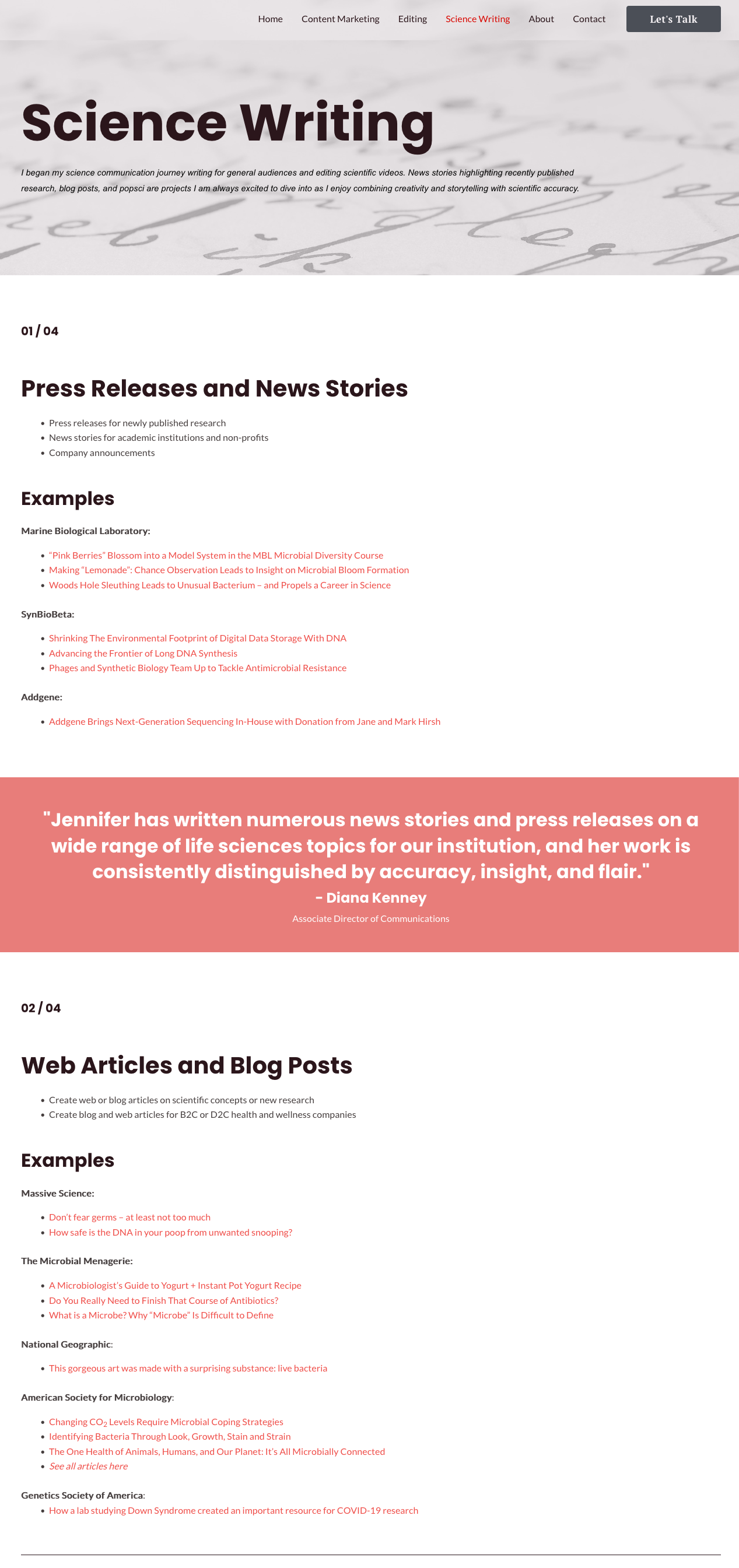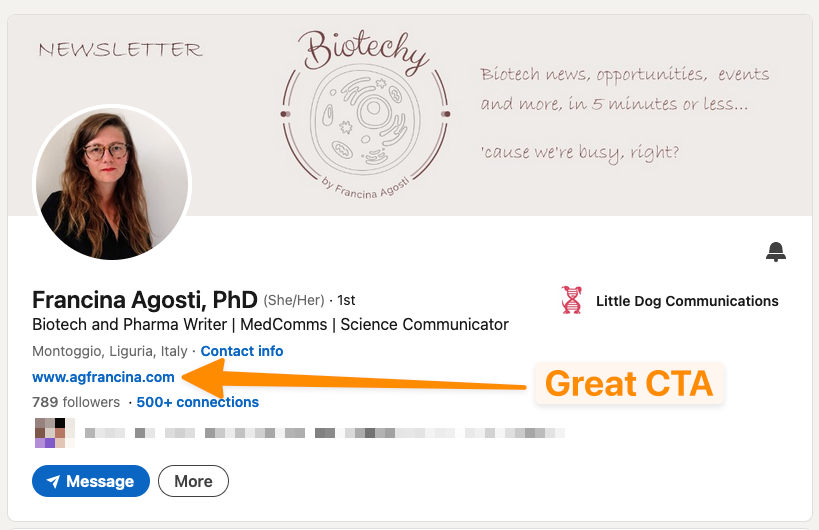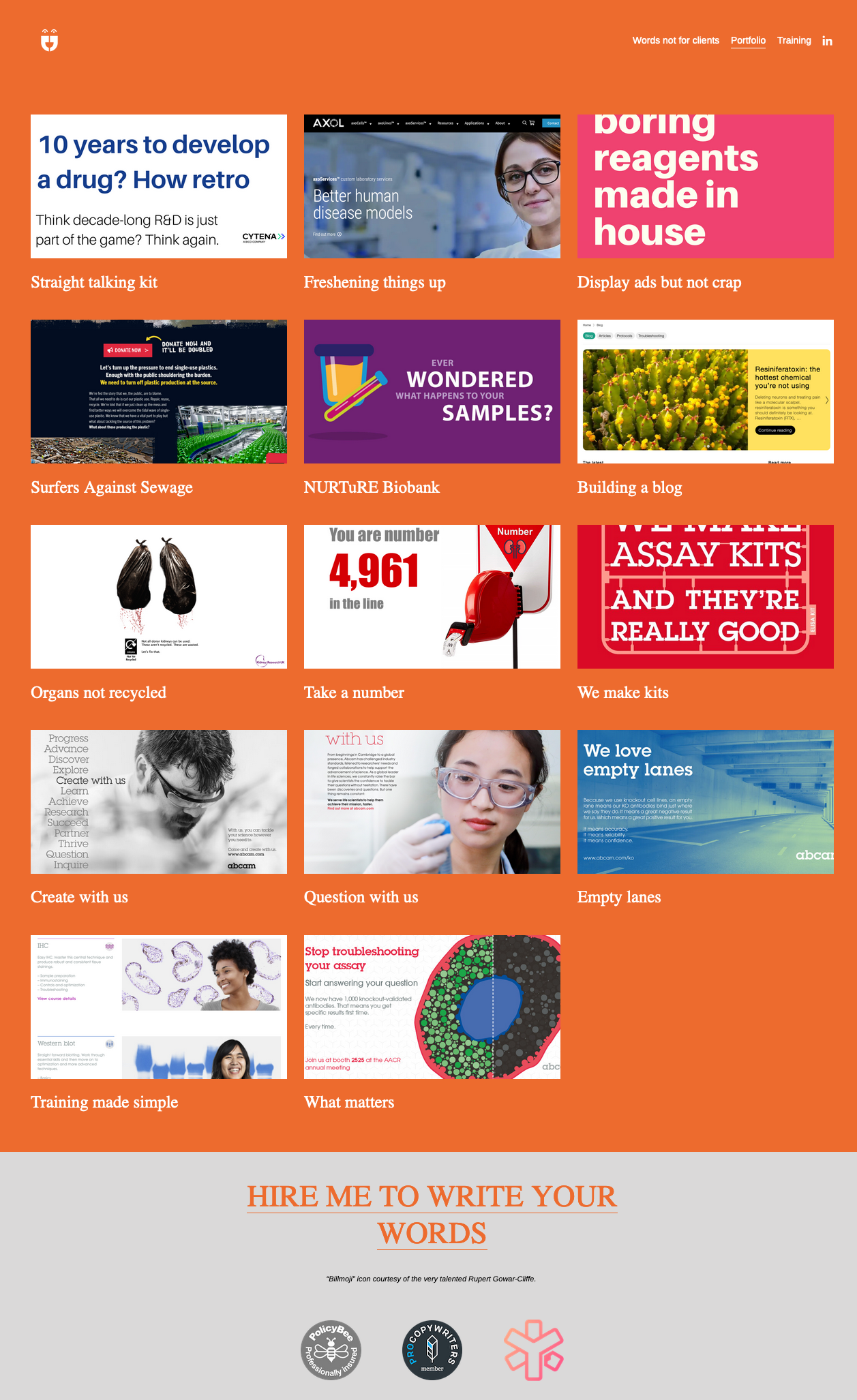I've been hiring science writers regularly for the past ten years, and one thing that always makes or breaks the first impression is their portfolio.
A science writing portfolio is a collection of written samples selected by a writer to represent their work. These days, it's usually a list of links to online articles, but there are no rules set in stone and people can get creative to show their work.
Putting a portfolio together is not complicated once you have a few assignments under your belt. But it's a different story for newbies, and I can't count how many first-time writers have asked me how they can get a portfolio when no one will give them a chance to start.
So here's the tricky situation you're in: you don't have any good writing to show, but you need this first job to get something better to put in your portfolio.
What if I told you there was a way (three, actually) to have a portfolio ready to show before you even start your career? I'll explain the details in this article, but let's start with the basics first.
What should your portfolio include?
Before we get into the details of what's inside, let's take a quick look at the container.
Let me get this straight: There are no specific rules about what your portfolio should look like. The only thing that matters, in my opinion, is that it's easy to share and easy to navigate for anyone looking at it.
Some writers keep their portfolio on a personal website or share it as a PDF. It might be a good idea to have both, as some employers may prefer one or the other.
Remember, your portfolio doesn't have to be long to be impressive. As someone who regularly hires writers, I never look at more than a few articles. However, the way you present it is important, and clearly highlighting the type of writing you're presenting and the name of the publisher can make a good first impression (name-dropping matters in the writing space).
Some writers also like to include their academic writing in their portfolio. I don't disagree with this, as it’s an easy way to showcase your technical skills. However, if your goal is to get a job as a journalist or business writer, I strongly recommend that you leave your academic work at the end of the list. The only exception is if you’re after a technical or medical writing gig—in which case, academic writing should be at the top of your list.
The key is to keep it relevant to the type of work you want to get. Most new writers who send me their applications only include academic writing, and in all cases, I ignore it because it's irrelevant to the type of writing I need. So let me tell you what you could do instead.
The side-hustle approach
Start building your writing portfolio BEFORE you even consider getting a writing job. The key is to use your current situation to gain writing experience before declaring yourself a writer.
If you're still studying and want to make the transition to writing, now is the perfect time to start. I started Labiotech.eu during my bachelor's degree and eventually made a full-time living from it. Without this early start, it would have been much harder.
If you’re pursuing a PhD, use the downtime between experiments to write. You’re already planning to leave academia, so focus on finishing your PhD quickly and use the extra time to work on your writing career.
The same applies if you're in a career you want to leave for writing. Write alongside your day job and try to make the transition gradually. Be open and transparent about this with your company, as this may lead to opportunities you did not expect.
3 ways to build your portfolio from scratch
Starting to write now is the key to building a portfolio early on in your career, but how do you do that on your own? Here are three ideas you can use:
1. Create your own blog
Pick your niche, open a blog, and start writing. It doesn't get any easier than that. Don't think about making a living from it, just write what makes you happy. The goal is to have a portfolio of articles to show, so no pressure.
Now, I understand if the technical part of starting a blog puts you off. Lucky for you, it's 2024 and starting a blog practically takes two minutes.
Go to Substack or beehiiv, sign up for an account and there you go—you’re equipped with a website that’s looks better and has more features than 90% of publishing companies. If you’re a bit savvier, you can also take a look at Ghost, the platform I use for this website.
When it comes to writing, start by setting aside some time each day to write. Keep it regular—it has to be a set chunk of time, preferably hours, in which you’ll sit down daily and write. Use the time-blocking technique to help you with this.
Depending on the amount of time you can set aside, and the complexity of your writing, you can now decide how much input you can produce.
If you want to post short, news-oriented articles on your blog, aim for two or three a week. Setting aside an hour a day to write should be enough (maybe not in the beginning, but you'll get faster as you progress).
If you prefer longer posts, aim for one a week, or every other week if they require more research.
What's important is that you stick to it, even during the hard times when you're buried under work. Before you know it, you'll have plenty of articles in your portfolio, and you'll get better at writing through daily practice.
2. Start guest posting
Your blog can take you a long way in your efforts to build a convincing portfolio, but as I explained earlier, having some big names to show can be the element that catches the eye of a recruiter.
So in addition to your own platform, you should aim to get two or three guest posts on reputable publishers' sites.
How do you do that? Simply by contacting them and offering to write for free.
Most publishers actually have a guest posting form buried somewhere in their menu. If not, try the general contact address, or find the editor-in-chief on LinkedIn and reach out.
But get ready first. Don't just knock on their door and ask for an assignment. Do your homework, draft an article or an outline, and pitch it to them.
Don't try to get paid now; what you get from a guest post is far more valuable than your first paycheck (which won't be much anyway) and could get you a step in the publisher's door if you’re considering applying there later on.
3. Be an influencer
My final recommendation is to use social platforms to showcase your writing skills. Pick a platform you like, or one that fits your topic (for B2B writing, LinkedIn is the place to be), and start posting regularly.
Focus on writing well-researched posts, even if the format is short. Shitposting can be fun, but it's not the best idea if you want to impress your future boss.
I really see a social profile as an extension of a writer's voice, and if you commit to it, you can really build an audience that's also a compelling argument for hiring you. Plus, it doesn't have to be exclusive to the other two options above. Taken together, they could really accelerate your career as a science writer.
Make your portfolio obvious
Examples speak louder than words, so let’s look at some science writers' portfolios. Here are a few from my network that I found particularly interesting.
The first is from Jennifer Tsang, a freelance science writer from the US. Her portfolio page looks super clean, and it's well organized, with writing sorted into specific types and then specific publications. It's easy to scroll through, and that's really the message you want to convey to your client or future employer:

Another freelance science writer who does it right is Francina Agosti. Her portfolio page uses a similar organization to Jennifer's, but what she does really well is make this page obvious right at the top of her LinkedIn profile:

I wanted to highlight Francina's example because I still see too many writers hiding their portfolio in the darkest corners of their profile (or not showing it at all), which seems like a huge missed opportunity to me. So make your link obvious and share it everywhere your can!
Finally, I also wanted to highlight Bill Hinchen’s portfolio. Bill is the most hilarious freelance copywriter in the bio world, and much of his work is based on witty ads that grab your attention at a glance. Accordingly, his portfolio is much more visual:

This means that a portfolio is not only a tool for writers, but also for any independent marketer or copywriter who offers creative work.
Built it now
As a science writer, there is no excuse for not having a portfolio. Even if it's not perfect yet, or if you don't have as much to show for it as other writers, you can put some of your writing in a document and share it when you need to.
Heck, I already received a portfolio consisting of a Google Doc with three links. I actually interviewed this person because the links were interesting.
Don’t be afraid of showing a short portfolio, every writer has to start somewhere.





